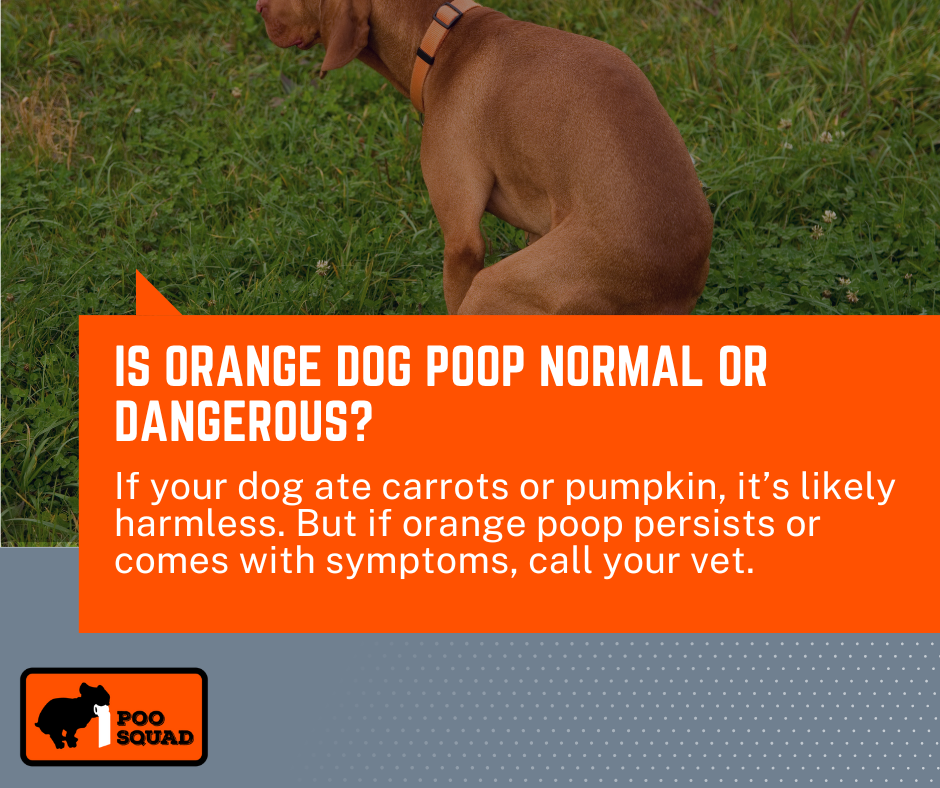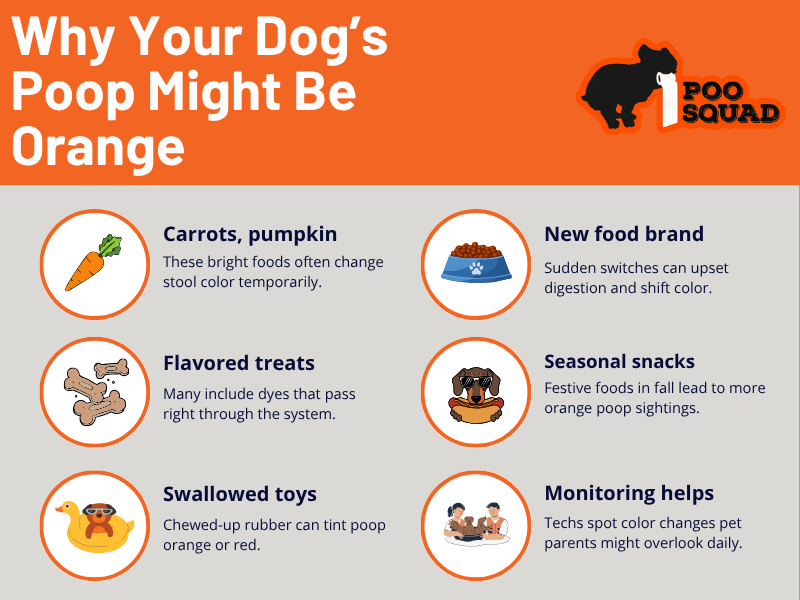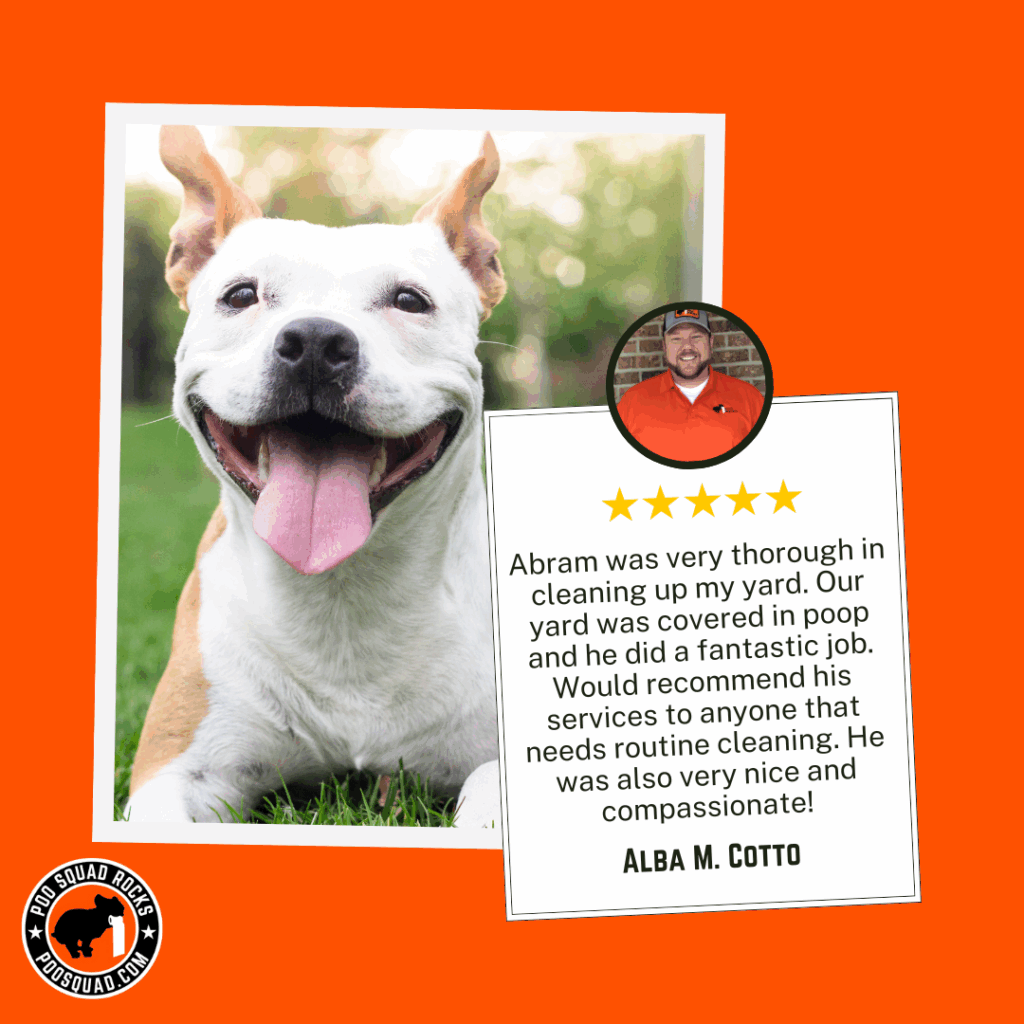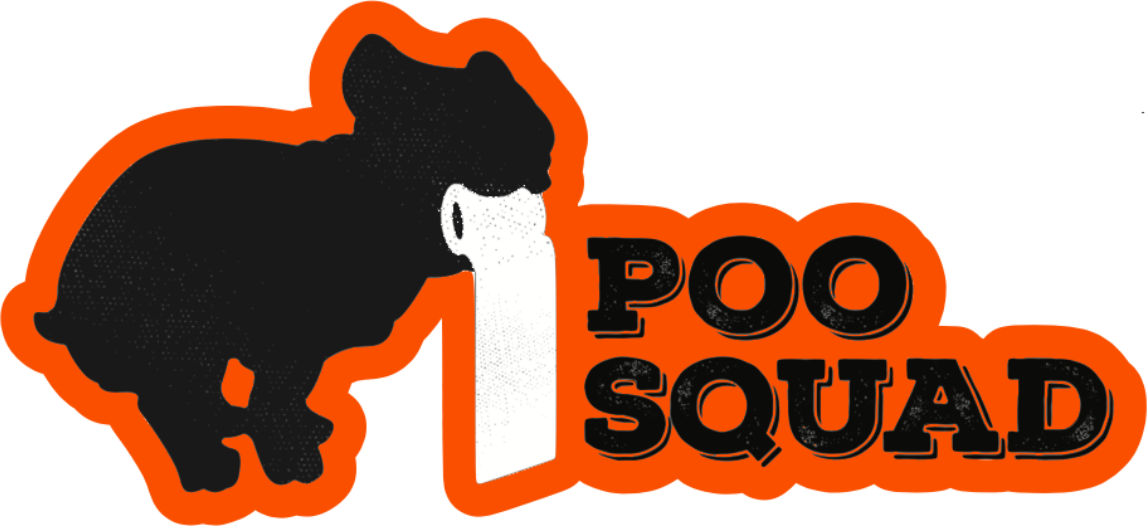Why Is My Dog’s Poop Orange? Causes & Next Steps
Orange dog poop is often caused by diet, carrots, pumpkin, or foods with beta-carotene, but can also signal liver, gallbladder, or bile flow issues. If stool appears greasy, clay-like, or is accompanied by vomiting, lethargy, or appetite loss, it may point to a deeper digestive problem. Puppies and senior dogs are more at risk from underlying causes.
Orange stool is not rare, but it is not something to ignore either. It may indicate bile flow issues, early-stage liver dysfunction, or irritation from something your dog chewed or swallowed. The difference between a harmless diet-related change and a potential health concern often lies in the poop’s consistency, smell, and frequency, not its color.
Most common reasons for orange dog poop, how to know when it’s safe to wait versus when to call your vet, and what signs mean it’s more than a snack reaction.
You’ll also learn how regular yard cleanup, done by trained pros who know what to look for, can help catch these signals early, before they turn into serious problems.
Is Orange Dog Poop Normal or Dangerous?

Orange dog poop can be either benign or a sign of something that needs medical attention. The key lies in the cause. From what your dog ate to how their liver or pancreas is functioning, there are clues in both the color and consistency that help determine the next step.
When It’s Likely Harmless (Diet-Related Causes)
If your dog recently munched on carrots, pumpkin, sweet potatoes, or even some vibrantly dyed treats, orange stool may simply be a side effect of their diet. Beta-carotene, the natural pigment found in orange vegetables, can pass through the digestive tract and tint their poop without causing harm. Other common culprits include:
- Canned dog food with colorful gravies
- Dental chews with artificial coloring
- Sudden changes in dog food brands
- Chewing on rubber or orange plastic toys
Even stress or eating too quickly can affect digestion and lead to temporary color changes. If the poop looks otherwise normal and your dog is acting fine, there’s often no cause for concern.
But don’t get too comfortable, there’s a difference between a quirky food reaction and an ongoing issue. And if scooping up colorful stool is not your thing, our yard deodorizer and sanitation services go beyond looks and focus on health and hygiene.
When Orange Poop Is a Warning Sign (Health-Related Causes)
Now, if your dog’s poop keeps turning orange, and especially if it’s greasy, pale, or sticky, it could point to a deeper issue with digestion. Problems in the liver, gallbladder, or pancreas can disrupt bile production, which normally gives stool its brown color. Without enough bile, stool may appear orange or yellow. Other red flags include:
- Mucus-covered poop or foul odor
- Fatigue, loss of appetite, or vomiting
- Sticky or clay-like texture
- Repeat occurrences over several days
There are also cases where ingestion of toxic materials, like paint chips or fertilizer, can create discolored stool. If your dog’s environment includes access to these things, it’s time to take a closer look.
And if you’re noticing these changes after recent flea or tick treatments, it might be worth bringing it up during your next vet visit. Color changes tied to medication aren’t common, but they’ve been reported. For those in high-traffic areas or managing multi-dog homes, commercial pooper scooper services can also help track and prevent health issues across shared spaces.
What Else to Watch for Alongside Orange Stool
Not all orange poop is created equal. To know whether it’s a harmless hiccup or a warning signal, you’ve got to look beyond the color. Pay attention to texture, smell, and your dog’s behavior; they tell a much clearer story than color alone ever could.
Texture and Smell Matter
If the poop is greasy, sticky, or has a clay-like consistency, there’s a higher chance that something internal is off. These textures can point to malabsorption issues, pancreatic insufficiency, or digestive inflammation. In some cases, mucus mixed with orange coloring suggests intestinal irritation or even a parasitic problem.
Dry, crumbly stool could signal dehydration or fiber imbalance, while an overly foul odor may indicate bacterial imbalance or infection.
People call after trying the DIY route, frustrated that they didn’t catch the signs earlier. Having professional eyes on your yard can make all the difference. That’s why so many families rely on our residential poop pickup services not only for cleanliness, but for peace of mind.
Behavior and Energy Levels
Color changes without any behavioral shifts? Probably less serious. But if your dog starts acting “off” around the same time their poop turns orange, take note. Warning signs include:
- Sudden fatigue or withdrawal
- Loss of appetite
- Vomiting or diarrhea
- Increased water consumption
- Sensitivity around the abdomen
Puppies and senior dogs are more sensitive to digestive changes, so even a single episode of orange stool in these age groups deserves attention. And if it’s been more than 48 hours without improvement, it’s time to give your vet a call.
Many of our clients admit they would have waited longer if not for noticing something unusual during our regular cleanups. Consistency in who’s checking the yard, not only when, is a big reason families trust us.
How Diet and Lifestyle Affect Poop Color
Your dog’s diet plays a massive role in what ends up in the yard. But it’s not only what they eat, it’s how often they eat, what they chew on, and even how their digestive system handles stress. Understanding these factors can help you decode an orange poop situation before it turns into a health scare.

Ingredients That Can Turn Poop Orange
It’s no surprise that bright-colored foods can lead to bright-colored results. The most common dietary causes of orange stool include:
- Carrots, pumpkin, turmeric, sweet potatoes
- Boutique dog foods rich in beta-carotene
- Human leftovers with food dyes
- Dental chews or flavored bone snacks
- Colored plastic toys or rubber items chewed up and swallowed
Sometimes, switching dog food brands too quickly can also disrupt digestion and lead to color changes. If your pup’s meals look like something from a Crayola box, expect their poop to follow suit.
This is especially true during seasonal shifts, like fall, when pumpkin treats are everywhere. Our teams have seen spikes in orange poop reports around October more than once, and it’s usually traced back to festive snacks.
DIY vs Professional Oversight
When you’re the one doing the scooping, it’s easy to miss early signs. That’s why we train our techs to recognize stool color anomalies and textures that raise concern. You might not think twice about a light orange hue, but someone scooping hundreds of yards a week knows when something’s not quite right.
We’ve seen everything from dogs who eat art supplies (we call them “Poocassos”) to curious pups with a taste for socks and crayons. Without regular monitoring, these behaviors often go unnoticed until the problem escalates.
Having someone in your yard who’s trained to care about what comes out of your dog makes a big difference. And since we sanitize between every visit, you’ll know if a weird color is isolated to your pup, not a leftover from someone else’s.
When Should You Contact a Vet?
Knowing when to call your vet can feel like walking a tightrope, especially when your dog seems perfectly fine otherwise. Orange poop might be harmless in many cases, but when paired with the wrong signs or ignored for too long, it could mean something more serious is brewing.
Use This Checklist
If you’re on the fence, run through this quick list. You’ll want to call your vet if:
- The orange stool lasts longer than 48 hours
- It’s greasy, clay-like, or contains visible mucus
- Your dog shows signs of fatigue, vomiting, or appetite loss
- The color change came after a new medication or supplement
- You suspect your dog ate something toxic (paint chips, rust, fertilizer)
- The poop is discolored, and your dog is acting unusually anxious or withdrawn
We’ve had customers spot something strange in the yard, only to dismiss it because their dog was “acting normal.” But behavior is only one part of the puzzle. If you wait too long, something small can quickly snowball into an emergency, especially in puppies, older dogs, or breeds with sensitive GI systems.
And if it’s hard to stay on top of poop patterns consistently, we make it easier. Our yard sanitation and deodorizing services are a great way to ensure your dog’s bathroom habits are on your radar without having to deal with the mess yourself.
How We Help Catch These Early Signs

If you’re relying on guesswork to monitor your dog’s health, you’re missing out on one of the clearest signs something might be off, what’s left behind in the yard. While you’re juggling work, kids, and a busy life, we’re out there spotting the things that often go unnoticed.
Our team doesn’t only scoop and run. We’re trained to pay attention. That weird orange smear? We’ve seen it before.
That shift in texture?
Noted. Because we visit yards regularly, we’re in a better position to identify patterns that pet parents might overlook, especially when dogs tend to go in the same spots or hide their messes behind bushes.
Sanitizing between yards ensures there’s no cross-contamination, which means if something’s off, it’s specific to your pup, not another dog two houses down. And since we never use your hose or trash cans, there’s no guesswork or mess left behind.
Whether it’s a subtle change in color, consistency, or frequency, our presence adds another layer of observation that makes a real difference, without you having to lift a finger.
If you’re managing a shared space like an HOA or commercial property, our commercial pooper scooper services offer that same level of care on a larger scale.
Trust Your Gut, But Watch Theirs Too
When your dog’s poop turns orange, it’s easy to spiral, especially with so many mixed answers online. But most cases boil down to food, digestion speed, or something they’ve chewed on. Still, if the poop looks strange and your dog starts acting differently, it’s better to err on the side of caution.
Keeping an eye on your dog’s health doesn’t have to mean obsessively checking their stool every day. That’s why we do what we do. Our scooping services aren’t only about convenience, they’re about creating safer, healthier yards and giving pet parents peace of mind.
From daily reports to sanitized equipment and trained eyes, we help you catch the little things before they become big problems.
If you’re tired of guessing, stressing, or arguing over who’s cleaning the yard this week, our residential poop pickup service might be exactly what your family needs.
Frequently Asked Questions About Orange Dog Poop
Can I wait a few days and see if it goes away?
If your dog is eating, playing, and acting normally, a day or two is usually fine, especially if they’ve recently eaten carrots or pumpkin. But if the orange color sticks around, or the texture seems off, it’s smart to call your vet.
Does changing dog food cause orange stool?
Yes, especially if the transition is abrupt or the new formula includes color-rich ingredients. Always switch foods gradually over 7–10 days to minimize digestive stress and stool changes.
Is orange poop ever a sign of something serious?
Yes. It can be linked to bile production issues, liver or gallbladder disorders, or even ingestion of toxic materials. If it’s greasy, pale, or combined with symptoms like vomiting or lethargy, contact your vet immediately.
How do I know if it’s a food reaction or a health problem?
Check the timing. If the poop turns orange right after a meal with carrots, pumpkin, or colored treats, and your dog’s acting fine, it’s likely a diet. If it persists for more than 48 hours or your dog’s behavior changes, it’s time for a vet visit.
Should I collect a sample for the vet?
Absolutely. Place the freshest sample in a sealed bag or container and refrigerate it if you can’t get to the vet right away. It’ll help them run accurate tests.
What if my dog has orange poop but seems perfectly healthy?
You’re not alone; many pet parents report this. Still, poop can be a preview of what’s happening internally. Keep an eye on it, and if it happens again, take note of what your dog ate or any medications they were on.
Author: Chief Scooper
Jamie Coones is the founder of Poo Squad. He started the original location in Manhattan, KS in 2017 and has since licensed the brand to another 20 other owners with locations across the country.
